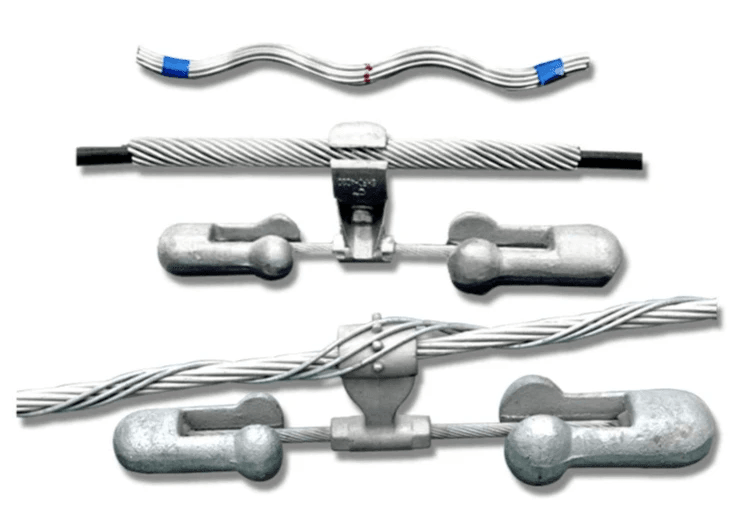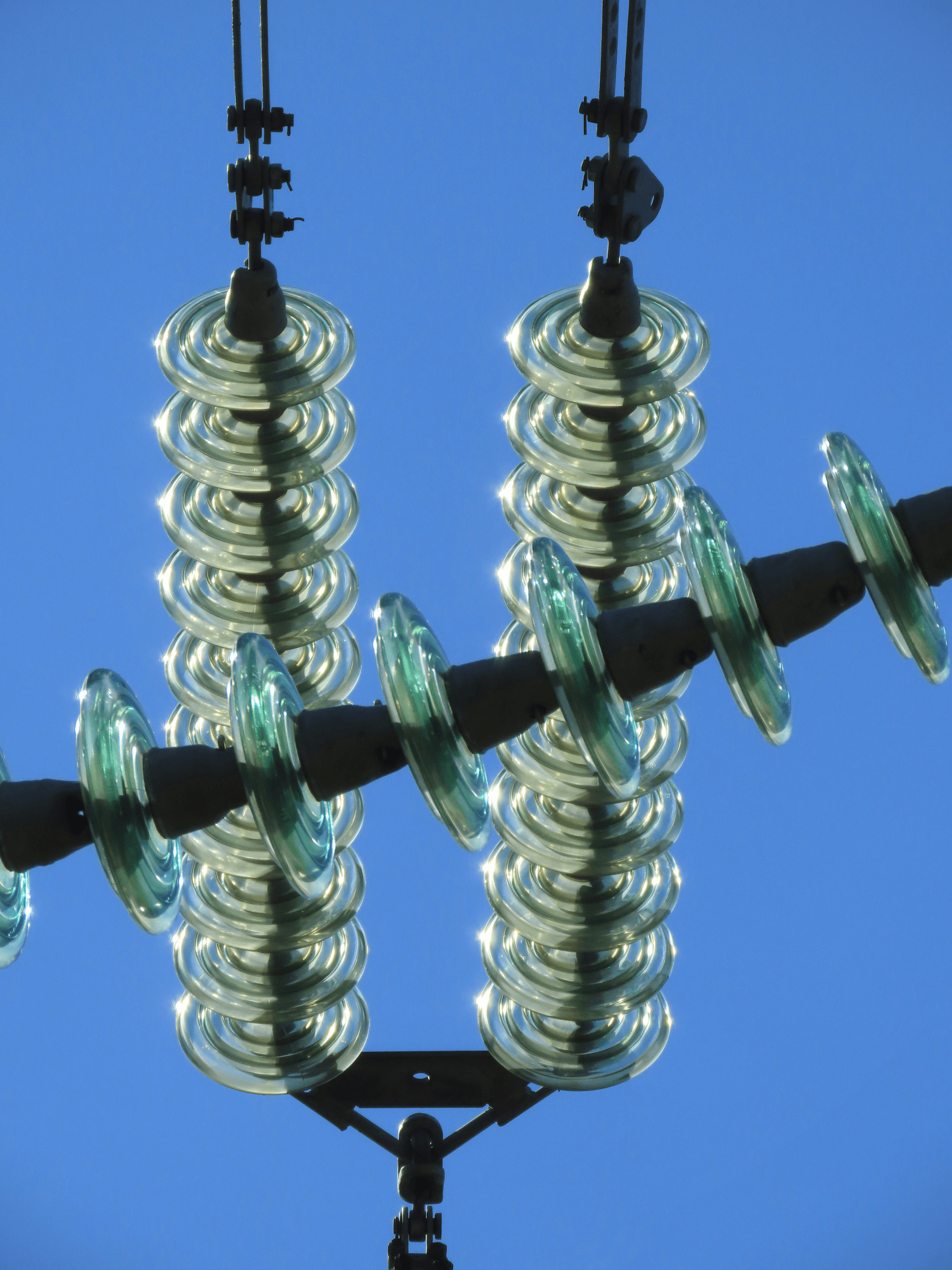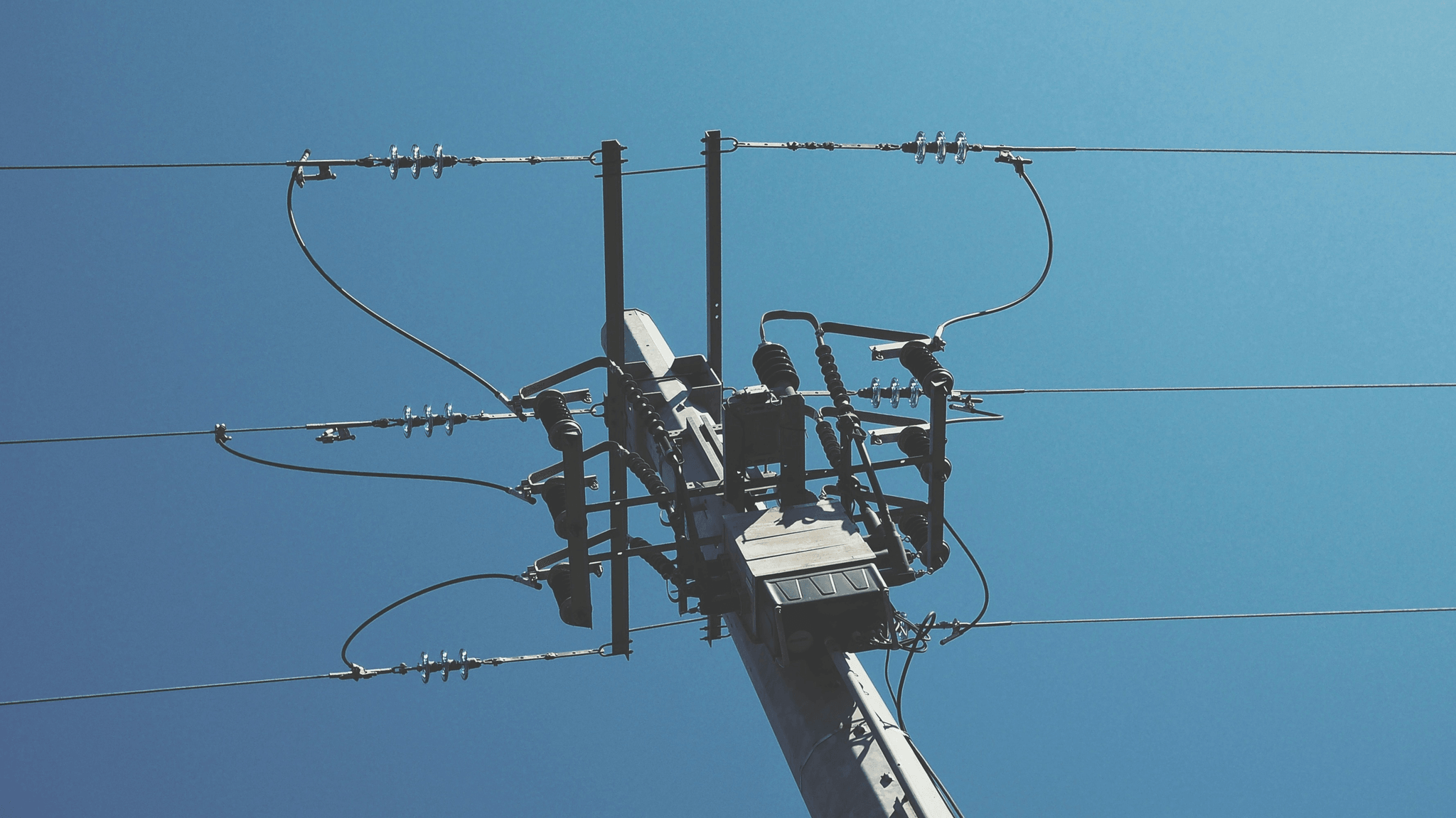Introduction

Transmission lines are the unsung heroes of our electrical infrastructure, carrying high voltage electricity over vast distances to ensure that homes and businesses stay powered. Within these intricate systems lie various components, each playing a critical role in maintaining efficiency and safety. Among these components are the often-overlooked corona rings and grading rings, which help manage electrical discharges and improve overall performance.
Overview of Transmission Line Components
To truly appreciate the significance of corona and grading rings, it's essential to understand what makes up a transmission line. Typically, transmission lines consist of conductors, insulators, support structures, and protective devices like v rings. These components work in harmony to transport electricity while minimizing losses due to environmental factors such as weather conditions or electromagnetic interference.
Importance of Corona and Grading Rings
So why are corona rings and grading rings so important? The primary function of these rings is to mitigate issues related to corona discharge—a phenomenon that can lead to energy loss and equipment damage in high voltage transmission systems. By effectively managing electrical fields around conductors, these rings play a crucial role in preventing unwanted discharges that could compromise the integrity of power systems.
Role of Spark Fittings in Power Systems
In addition to corona and grading rings, spark fittings also serve an essential purpose in power systems by providing additional protection against electrical discharges. These fittings act as safety mechanisms that help ensure smooth operation within transmission lines by redirecting excessive energy away from sensitive areas. Together with guard wire in transmission lines, spark fittings enhance overall system reliability while safeguarding against potential hazards associated with high voltage electricity.
Understanding Corona Rings

When it comes to high voltage transmission lines, one of the key components you might notice is the presence of corona rings. These specialized rings are typically found on power lines and have a crucial role in managing electrical discharge phenomena. Understanding what these rings are and their functions can help demystify their importance in maintaining efficient power systems.
What Are the Rings on Power Lines?
The rings on power lines, often referred to as corona rings, are conductive devices placed at strategic points along high voltage transmission lines. They come in various forms, including circular or V-shaped configurations, designed to mitigate electrical discharges that can occur due to ionization of air around conductors. The primary purpose of these corona rings is to create a more uniform electric field around the conductor, thereby reducing the likelihood of corona discharge.
Purpose of Corona Rings
The main purpose of corona rings is to prevent excessive electrical discharges that can lead to energy loss and potential damage to equipment. By providing a controlled path for electric fields, they help maintain system integrity while enhancing overall line performance. Additionally, using guard rings alongside traditional corona rings offers an extra layer of protection against unwanted electrical phenomena in high voltage transmission.
Effects of Corona Discharge
The effects of corona discharge can be quite significant if not properly managed through devices like V rings and guard wires in transmission lines. When air molecules become ionized due to high voltage stress, they can create audible noise, radio interference, and even energy loss through ozone production—none of which are desirable outcomes for efficient energy transport. Moreover, unchecked corona discharge can lead to deterioration over time; thus understanding its implications is essential for those involved in power systems management.
The Significance of Grading Rings

Grading rings play a crucial role in the operation and efficiency of transmission lines, particularly in high voltage transmission systems. These components are designed to manage electrical stress along the line, ensuring that power is transmitted smoothly and safely. Understanding their significance can help with selecting the appropriate components for effective power system management.
What Are Grading Rings in Transmission Lines?
Grading rings are conductive devices placed on high voltage transmission lines, specifically around insulators and other critical junctions. These rings serve to distribute electrical stress evenly across a surface, thereby minimizing the risk of dielectric breakdown. You might wonder what are the rings on power lines? In essence, grading rings are integral to maintaining system reliability and safety.
Functionality of Grading Rings
The primary functionality of grading rings lies in their ability to mitigate electric field intensity at points where it tends to concentrate, such as sharp edges or corners on insulators. By providing a more uniform electric field distribution, grading rings effectively reduce corona discharge and enhance overall line performance. This leads us to consider why use guard ring in transmission line applications; they complement grading rings by offering additional protection against electrical discharges.
Benefits of Using Grading Rings
Utilizing grading rings brings several benefits that can significantly enhance high voltage transmission systems. First off, they help prevent electrical discharges that could otherwise lead to power loss or equipment failure—a vital consideration for any utility company managing extensive networks. Additionally, these devices contribute to longer service life for insulators by reducing wear and tear caused by concentrated electric fields; this means lower maintenance costs over time! Lastly, when you compare different types of transmission lines—like tie lines versus standard transmission lines—gracing your setup with grading rings can make all the difference in performance.
Key Differences Between Corona and Grading Rings

When it comes to transmission lines, understanding the differences between corona rings and grading rings is crucial for efficient high voltage transmission. Both types of rings play significant roles in managing electrical performance, yet they have distinct structures and functionalities. Let's dive into their key differences to clarify their unique contributions to power systems.
Structural Variations and Configurations
Corona rings are typically designed as circular or elliptical metallic devices placed at strategic points along the transmission line. Their primary purpose is to mitigate corona discharge, which can occur due to high electric fields around conductors. In contrast, grading rings are often more complex in configuration; they may feature multiple layers or varying diameters to create a more uniform electric field across the conductor's surface.
These structural variations influence how each type of ring interacts with electrical components in high voltage transmission systems. For instance, while v rings serve a specific purpose in enhancing insulation performance, grading rings focus on reducing voltage gradients that could lead to electrical failures. Understanding these configurations helps engineers choose the right components for specific applications.
Applications in High Voltage Transmission
Both corona and grading rings find their applications primarily in high voltage transmission lines but serve different functions within that context. Corona rings are essential where there’s a risk of ionization due to elevated electric fields, making them critical for ensuring safety and efficiency in power delivery systems. On the other hand, grading rings are often used where there’s a need for maintaining voltage levels over long distances without significant losses.
Moreover, when discussing what are the two types of transmission lines—overhead and underground—it's important to note how these ring types adapt differently based on environmental conditions. For example, v rings might be favored in overhead lines exposed to weather elements, while grading rings could be more applicable within insulated underground setups where space is limited but reliability is paramount.
Impact on Electrical Performance
The impact of corona and grading rings on electrical performance cannot be overstated; both contribute significantly but through different mechanisms. Corona discharge can lead to energy loss and equipment degradation if not managed effectively by corona rings; thus, their presence directly influences system efficiency during high voltage transmission operations. Conversely, grading rings help maintain a balanced electric field along conductors which minimizes stress on insulation materials.
Furthermore, when considering why use guard ring in transmission line installations, it's clear that these components enhance overall system reliability by preventing localized discharges that could compromise equipment integrity. This relationship becomes even more apparent when comparing guard wire in transmission line setups; both serve protective roles but target different aspects of electrical safety.
In summary, understanding the key differences between corona and grading rings helps ensure optimal design choices for high voltage applications while maximizing performance across various scenarios involving v rings or other protective measures.
Why Use Guard Rings in Transmission Lines?

Guard rings play a crucial role in enhancing the overall performance of transmission lines, especially those operating at high voltages. By providing a controlled path for electrical discharges, guard rings help to mitigate the adverse effects of corona discharge and electrical arcing. This not only improves the reliability of power transmission but also extends the lifespan of the infrastructure.
Enhancing Line Performance
One of the primary reasons to use guard rings in transmission lines is their ability to enhance line performance significantly. These rings effectively distribute electric fields around high voltage conductors, minimizing localized stress that could lead to breakdowns or failures. When considering what are the rings on power lines, guard rings stand out as essential components that ensure consistent and efficient energy flow.
Furthermore, by using v rings as guard rings, utilities can achieve better voltage regulation and reduce losses due to corona discharge. The enhanced performance translates into lower maintenance costs and fewer interruptions in service—an essential factor for any utility provider aiming for reliability in high voltage transmission systems.
Preventing Electrical Discharges
Electrical discharges can wreak havoc on transmission systems if not properly managed; this is where guard rings shine. Their design helps prevent unwanted electrical discharges by creating a more uniform electric field around conductors, thus reducing the likelihood of arcing or flashovers that can lead to outages. The question Why use guard ring in transmission line? becomes clear when you consider their role in safeguarding equipment from damage caused by these dangerous phenomena.
Moreover, guard wires in transmission lines work hand-in-hand with guard rings to further minimize risks associated with electrical discharges. Together, they create a protective barrier that enhances safety and reliability for both operators and consumers alike.
Relationship with Guard Wire in Transmission Line
The relationship between guard rings and guard wires is vital for optimal performance in high voltage transmission systems. While both serve protective roles, they complement each other effectively; guard wires provide an additional layer of protection against external factors like lightning strikes or physical impacts while guard rings focus on managing internal electrical stresses.
When discussing what are the two types of transmission lines—overhead and underground—it's essential to note how these protective features adapt accordingly; overhead lines often utilize both v rings as well as guard wire configurations for maximum effectiveness against environmental challenges. This synergy allows utilities to maintain robust infrastructure capable of withstanding various operational stresses while ensuring reliable electricity delivery.
The Role of V Rings in Power Systems

V rings play a critical role in enhancing the performance and reliability of high voltage transmission lines. These specially designed components help manage electrical stress and mitigate the effects of corona discharge, which can be detrimental to line integrity. By using v rings, power systems can achieve better efficiency and reduced maintenance costs.
Advantages of V Rings for High Voltage Lines
One of the primary advantages of v rings is their ability to minimize corona discharge, which is a common issue in high voltage transmission lines. By providing a smoother surface for electrical flow, v rings help reduce energy losses and improve overall system efficiency. Additionally, their unique design allows them to redistribute electric fields effectively, further enhancing performance while prolonging the lifespan of transmission infrastructure.
Moreover, v rings are particularly effective in maintaining stable operating conditions under varying environmental factors such as humidity and temperature fluctuations. This adaptability makes them an ideal choice for use in diverse geographical locations where high voltage transmission lines are prevalent. When considering what are the rings on power lines that can offer such benefits, v rings stand out for their specialized functionality tailored to high voltage applications.
Installation and Maintenance Considerations
Proper alignment is essential to maximize their effectiveness in reducing corona discharge and managing electric fields effectively. Additionally, regular inspections should be conducted post-installation to monitor wear or damage that could affect performance over time.
Maintenance considerations also include ensuring that v rings remain free from debris or other obstructions that could interfere with their functionality. While these components are designed for durability, environmental factors can still impact their condition; therefore, routine checks should be part of any maintenance schedule for high voltage transmission systems. Understanding why use guard ring in transmission line applications highlights how crucial these components are not just during installation but throughout their operational life as well.
Comparison with Other Ring Types
When comparing v rings with other ring types used in power systems—such as grading or corona rings—several key differences emerge regarding functionality and application scope. While grading rings focus primarily on equalizing potential across conductors to prevent electrical discharges, v rings excel at minimizing corona effects specifically associated with high voltage scenarios. This specialization makes them particularly advantageous when dealing with extreme electrical stress commonly found in long-distance power transmissions.
Additionally, unlike traditional guard wire in transmission line setups that primarily serve protective roles against lightning strikes or short circuits, v rings provide direct benefits related to electrical performance enhancement under normal operating conditions. Their design allows them to operate effectively without adding significant weight or complexity compared to other ring types like tie lines versus standard transmission lines where structural integrity must be upheld while managing electrical loads efficiently.
Conclusion
In wrapping up our exploration of transmission line components, it's clear that understanding the roles of various rings is crucial for optimizing high voltage transmission systems. The primary distinctions between corona rings, grading rings, and v rings highlight their unique functionalities and applications in power systems. Each type serves specific purposes, from mitigating corona discharge to enhancing electrical performance, making them indispensable in ensuring efficient power delivery.
Summary of Key Differences
When we compare the different types of rings used on power lines, we find that v rings are particularly advantageous for high voltage lines due to their design that minimizes electrical stress. On the other hand, grading rings help to distribute electric fields more evenly along transmission lines while reducing potential hotspots. Additionally, guard rings play a vital role in preventing electrical discharges and protecting infrastructure from damage caused by environmental factors or operational anomalies.
Importance of Selecting the Right Ring
Choosing the right ring is critical for maintaining optimal performance in high voltage transmission systems. For instance, if you’re dealing with a setup requiring enhanced insulation and reduced corona effects, v rings might be your best bet. Conversely, if you're focused on managing electric field distribution effectively across your transmission line—especially when considering guard wires—a combination of grading and guard rings could provide superior results.
Future Innovations in Transmission Line Technology
Looking ahead, innovations in transmission line technology promise to further refine how we utilize components like v rings and grading rings. Advances may include materials that offer better durability against environmental stresses or smart technologies that monitor ring performance in real-time. As power demands continue to rise globally, these improvements will be essential not only for enhancing efficiency but also for ensuring safety across all types of transmission lines.

